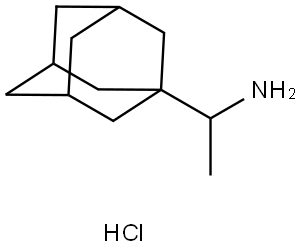BENACTYZINE HYDROCHLORIDE
- CAS NO.:57-37-4
- Empirical Formula: C20H26ClNO3
- Molecular Weight: 363.88
- MDL number: MFCD00012624
- EINECS: 200-324-4
- SAFETY DATA SHEET (SDS)
- Update Date: 2024-12-18 14:07:02

What is BENACTYZINE HYDROCHLORIDE?
Originator
Suavitil,Merck Sharp and Dohme,US,1957
The Uses of BENACTYZINE HYDROCHLORIDE
Benactyzine Hydrochloride is an antagonist of acetylcholine in the central and peripheral nervous system. Benactyzine Hydrochloride is used as an antispasmodic.
What are the applications of Application
Benactyzine hydrochloride is a centrally acting muscarinic antagonist
Manufacturing Process
114 parts of ethyl benzilate, 175 parts of β-diethylaminoethanol and 0.2 part of metallic sodium were placed in a flask attached to a total-reflux variable take-off fractionating column. The pressure was reduced to 100 mm and heat was applied by an oil bath the temperature of which was slowly raised to 90°C. During three hours of heating 17 parts of ethanol distilled (35.5°C). When the distillation of the ethanol became slow, the bath temperature was raised to 120°C. When the vapor temperature indicated distillation of the amino alcohol the take off valve was closed and the mixture was refluxed for one hour. At the end of this period the vapor temperature had dropped and two more parts of ethanol were distilled, The remaining aminoalcohol was slowly distilled for three hours. The pressure was then reduced to 20 mm and the remainder of the aminoalcohol distilled at 66°C. During the reaction the color of the solution changed from yellow to deep red. The residue was dissolved in 500 parts of ether, washed once with dilute brine, and three times with water, dried over sodium sulfate and finally dried over calcium sulfate. 500 parts of a saturated solution of HCl in absolute ether was added and the resulting precipitate filtered. Dry HCl gas was passed into the filtrate to a slight excess and the precipitate again filtered. The combined precipitates were washed with cold acetone. The 106 parts of product was purified by recrystallization from acetone as fine white crystals which melt at 177°- 178°C.
Therapeutic Function
Tranquilizer; Anticholinergic
Safety Profile
Poison by ingestion, intraperitoneal, subcutaneous, intradermal, and intravenous routes. Human systemic effects by ingestion of very small amounts: toxic psychosis. Experimental reproductive effects. When heated to decomposition it emits very toxic fumes of NO, and HCl
Properties of BENACTYZINE HYDROCHLORIDE
| Melting point: | 177-179 °C(lit.) |
| storage temp. | Keep in dark place,Sealed in dry,Room Temperature |
| solubility | DMSO (Slightly, Heated), Methanol (Slightly) |
| form | Solid |
| color | Crystals from Me2CO |
| Merck | 14,1029 |
| CAS DataBase Reference | 57-37-4(CAS DataBase Reference) |
| EPA Substance Registry System | Benzeneacetic acid, .alpha.-hydroxy-.alpha.-phenyl-, 2-(diethylamino)ethyl ester, hydrochloride (57-37-4) |
Safety information for BENACTYZINE HYDROCHLORIDE
| Signal word | Danger |
| Pictogram(s) |
 Skull and Crossbones Acute Toxicity GHS06 |
| GHS Hazard Statements |
H301:Acute toxicity,oral |
| Precautionary Statement Codes |
P264:Wash hands thoroughly after handling. P264:Wash skin thouroughly after handling. P270:Do not eat, drink or smoke when using this product. P405:Store locked up. P501:Dispose of contents/container to..… |
Computed Descriptors for BENACTYZINE HYDROCHLORIDE
New Products
(S)-3-Aminobutanenitrile hydrochloride 4-Methylphenylacetic acid N-Boc-D-alaninol N-BOC-D/L-ALANINOL Tert-butyl bis(2-chloroethyl)carbamate 3-Morpholino-1-(4-nitrophenyl)-5,6-dihydropyridin- 2(1H)-one Furan-2,5-Dicarboxylic Acid Tropic acid 1-Bromo-3,5-Di-Tert-Butylbenzene S-2-CHLORO PROPIONIC ACID ETHYL ISOCYANOACETATE 2-Bromo-1,3-Bis(Dimethylamino)Trimethinium Hexafluorophosphate 4-IODO BENZOIC ACID 3-NITRO-2-METHYL ANILINE 1-(2,4-DICHLOROPHENYL) ETHANAMINE (2-Hydroxyphenyl)acetonitrile 4-Bromopyrazole 2-(Cyanocyclohexyl)acetic acid 4-methoxy-3,5-dinitropyridine 1-(4-(aminomethyl)benzyl)urea hydrochloride 2-aminopropyl benzoate hydrochloride diethyl 2-(2-((tertbutoxycarbonyl)amino) ethyl)malonate tert-butyl 4- (ureidomethyl)benzylcarbamate Ethyl-2-chloro((4-methoxyphenyl)hydrazono)acetateRelated products of tetrahydrofuran








You may like
-
 Benactyzine Hydrochloride CAS 57-37-4View Details
Benactyzine Hydrochloride CAS 57-37-4View Details
57-37-4 -
 2033-24-1 98%View Details
2033-24-1 98%View Details
2033-24-1 -
 1975-50-4 98%View Details
1975-50-4 98%View Details
1975-50-4 -
 2-HYDROXY BENZYL ALCOHOL 98%View Details
2-HYDROXY BENZYL ALCOHOL 98%View Details
90-01-7 -
 2-Chloro-1,3-Bis(Dimethylamino)Trimethinium Hexafluorophosphate 221615-75-4 98%View Details
2-Chloro-1,3-Bis(Dimethylamino)Trimethinium Hexafluorophosphate 221615-75-4 98%View Details
221615-75-4 -
 61397-56-6 CIS BROMO BENZOATE 98%View Details
61397-56-6 CIS BROMO BENZOATE 98%View Details
61397-56-6 -
 14714-50-2 (2-Hydroxyphenyl)acetonitrile 98+View Details
14714-50-2 (2-Hydroxyphenyl)acetonitrile 98+View Details
14714-50-2 -
 118753-70-1 98+View Details
118753-70-1 98+View Details
118753-70-1